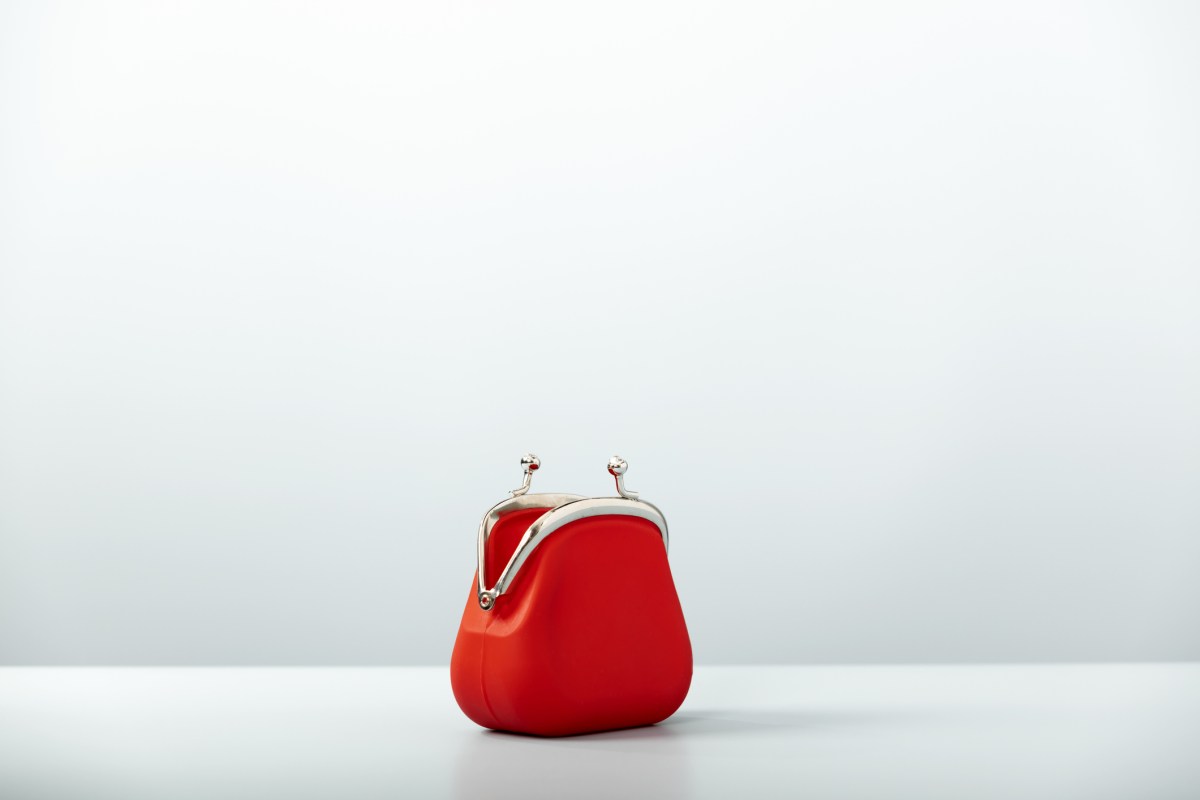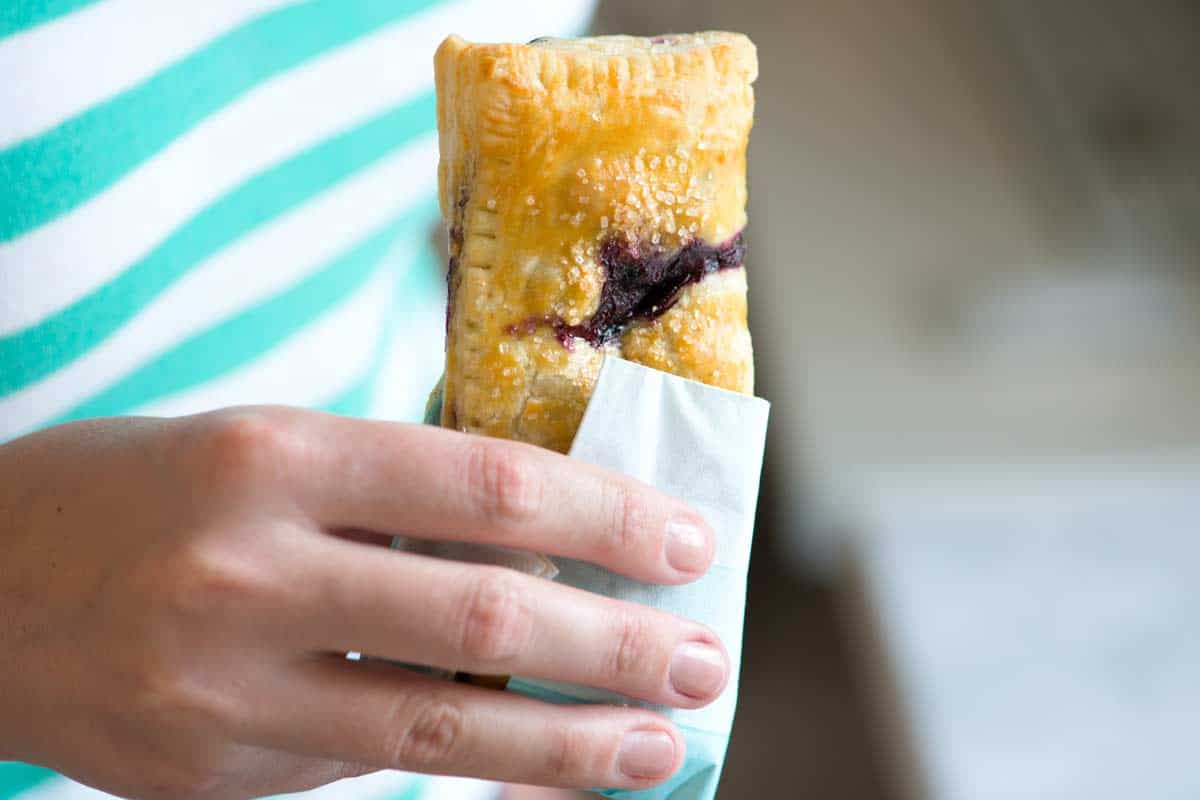Henri Matisse’s great-grandson is probably your favorite potter

Being the great-grandson of the French artist Henri Matisse can be complicated.
Alex Matisse grew up in the Northeastern United States, and being a Matisse meant being immersed in art. It’s what his family talked about at the dinner table; the walls of his home were full of paintings usually seen only in museums. By the time he was in elementary school, Alex could recite his great-grandfather’s most notable works, like La Danse and the Nu Bleu series.
Like many of the Matisse children, Alex had artistic inclinations. Throughout his school years, he thrived in art classes, and in fourth grade he fell in love with pottery in an after-school program. But when Alex began to think about his future, he struggled to see how he could become an artist.
“I really wanted to escape my great-grandfather’s legacy,” he says. “I felt like if I became an artist, there would always intrinsically be a comparison to Henri’s work.”

So Alex forged his own path as an artisan potter, eventually founding the renowned North Carolina pottery company East Fork. Now he’s resurfacing his family roots with the new Matisse Collection, launching online today. It features famous motifs from Henri’s work displayed on dinner plates, dessert plates, and mugs. The company has also developed a new dark blue color, which it is calling La Sirène (the Mermaid), inspired by a color often used in Henri’s palette, bridging Matisse’s saturated, graphic sensibilities to East Fork’s rustic craft.
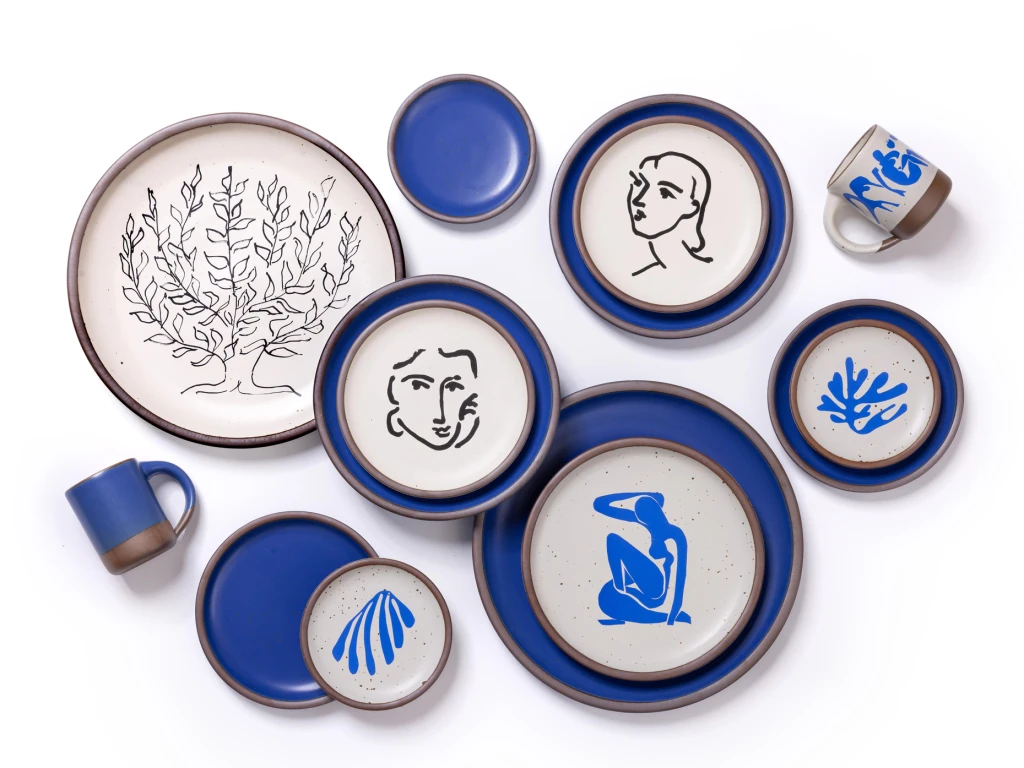
Forging a new path for the Matisse name
When he was starting out as a ceramist, Alex fell in love with a community of potters who had settled in North Carolina, creating rugged utilitarian pieces. He apprenticed with the legendary potter Mark Hewitt. In 2009 he bought a piece of land that was once home to an old tobacco farm in Asheville, North Carolina, and set about starting his own practice as a potter. “I didn’t really know what it was going to be,” he says. “But I had this feeling that if I tucked myself away in the mountains for a little bit, I’d figure it out.”
And he did. He met his wife, Connie, and another potter, John Vigeland. The three of them, still in their twenties, decided to launch East Fork in 2009. Over the next few years, they developed a unique look for their pottery, inspired by the heavyweight, wood-fired aesthetic of North Carolina potters but also blended with a minimalism that would appeal to millennials. They sold their plates, serving dishes, and mugs directly to customers through their website, and spread the word through Instagram.
Over the past decade, East Fork has thrived. The company now has a team of more than 100 people at its headquarters in Asheville, where there is a large factory. The company also has physical stores in Asheville, Atlanta, and Brooklyn. The pottery has become iconic, particularly among millennials. It’s common for couples to put East Fork’s dishes on their wedding registries.
Many consumers don’t know, or care, that it is made by the great-grandson of a famous French painter. In many ways, Alex did what he set out to do: He created his own artistic legacy that had nothing to do with his ancestors. “We’re not trying to play in the art world,” he says. “Its proper pottery. We sell beautiful objects that are functional, durable, useful.”
But then something interesting happened. Alex felt a shift inside himself; he wanted to reconnect with his heritage. He wanted to somehow find a way to nod to Henri’s most beloved paintings through his work at East Fork. He is doing so for the first time with this collection.
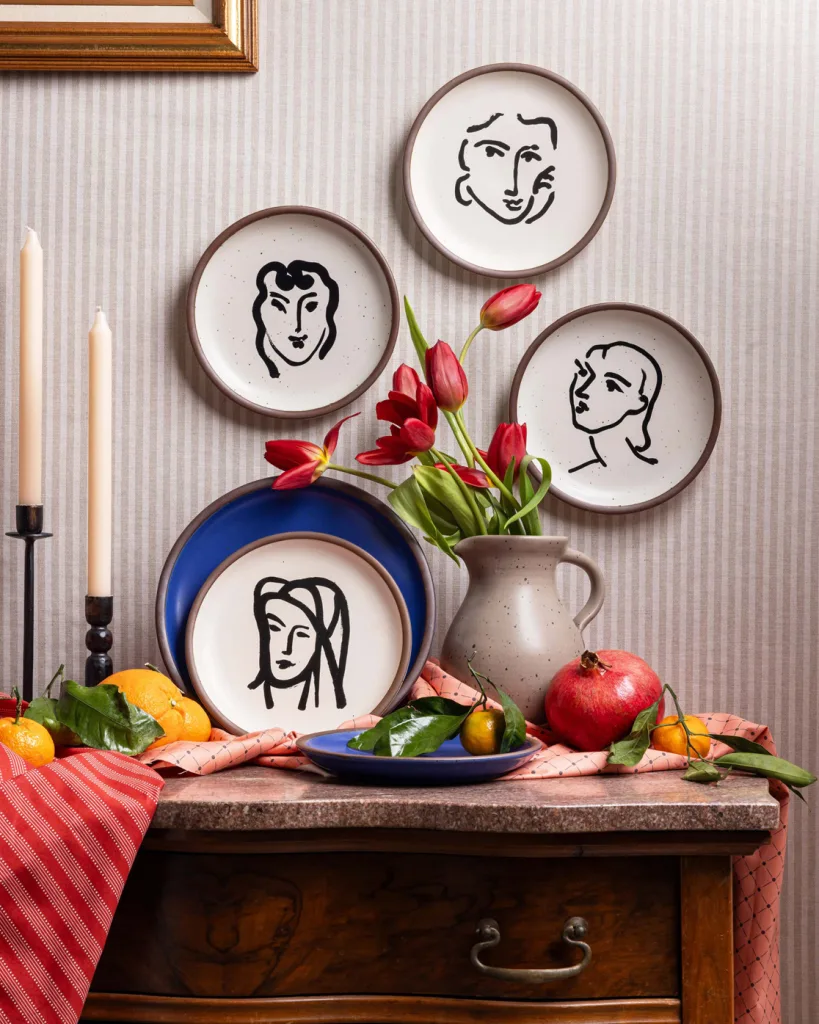
Matisse motifs
Alex chose the motifs for the Matisse Collection very carefully. He wanted them to be recognizable but also blend in perfectly with the East Fork aesthetic. “We thought really hard about how to pay homage to his work in an honest, complete presentation, without distorting it or cutting it up,” he says.
Henri’s best-known portraits are very spare; just thick black lines made in aquatint, a printmaking technique. Some of his most famous ones are Nadia au regard sérieux (Nadia With a Serious Look) and Bédouine au grand voile (Bedouin With Headscarf). In this collection, East Fork has captured these portraits on plates.
Henri is also famous for his Nu Bleu (Blue Nude) series, which features blue paper cutouts on canvas designed to reflect the human form. In the East Fork collection, these images are rendered on plates and mugs. “We just went through everything,” Alex says. “We kept trying different paintings until we found ones that fit perfectly wrapped around the mug.”
In some Nu Bleu paintings there are also images of palm fronds. In the East Fork collection, this motif is isolated and displayed on cake plates. On one serving platter, there is a large image of a tree taken from La Platane (The Plane Tree), which is made up of thick black strokes.

An homage to family lineage in an East Fork line
For Alex, it felt like a serious responsibility to identify and incorporate these motifs. This is partly because the Matisse family has been very judicious about licensing Henri’s art to create products, which is quite different from other well-known artists, like Vincent Van Gogh. This year, much of Henri’s art enters the public domain, which allows companies to use it without having to pay fees. (Some of the earlier work is already in the public domain.) Alex wants to make sure Henri’s work is represented in the very best way through this collection. “It was a moment where we felt we could shepherd Henri’s work into the world in a thoughtful way,” Alex says.
The East Fork team worked hard to render the images perfectly on the pottery. In the end, it was easiest to put them on as decals. They found a company in France that was able to translate the images into decals, and then East Fork applied them to the pottery and finished it off with a glaze.
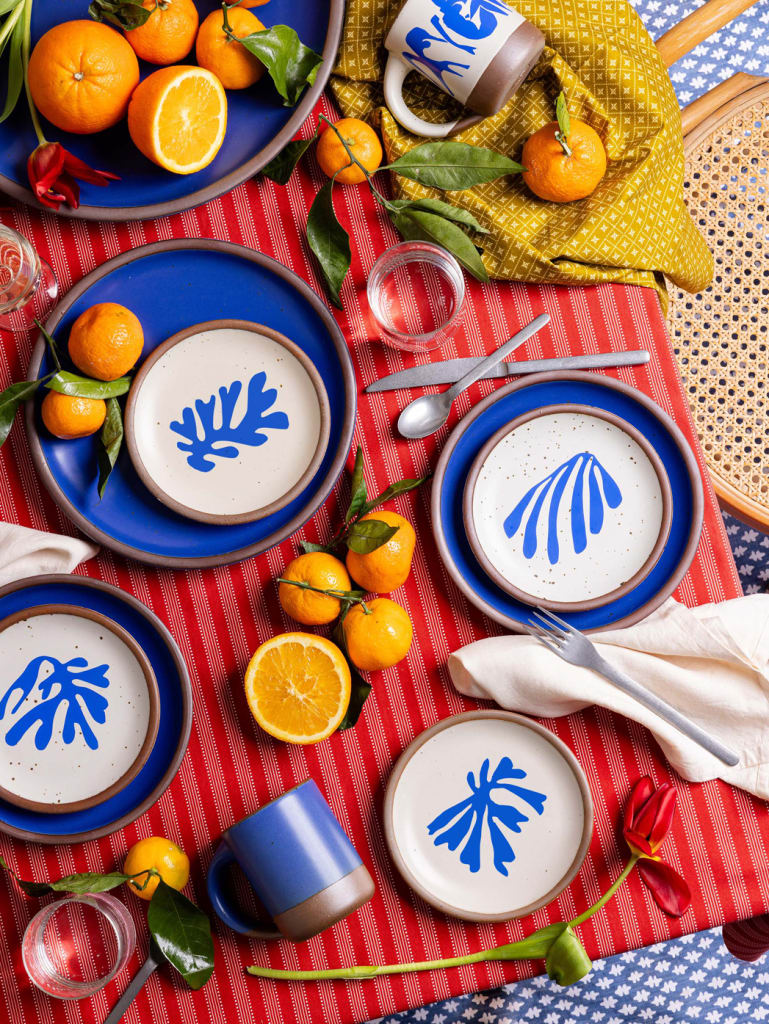
This collection is the first in what Alex wants to be an ongoing part of the East Fork line. Over time, the company will introduce different aspects of Henri’s work onto pottery, finding ways to draw new attention to the Matisse heritage. But in an interesting twist of fate, Alex believes there are some customers who are East Fork purists and who only want the brand’s minimal pieces that aren’t adorned with Henri’s work.
“We have tried very hard to make this collection very aesthetically similar to what we already make, so our existing customers will be intrigued by it,” he says of East Fork’s Matisse wares. “But there are others who won’t care about this collection. And that’s fine too.”
What's Your Reaction?
 Like
0
Like
0
 Dislike
0
Dislike
0
 Love
0
Love
0
 Funny
0
Funny
0
 Angry
0
Angry
0
 Sad
0
Sad
0
 Wow
0
Wow
0








